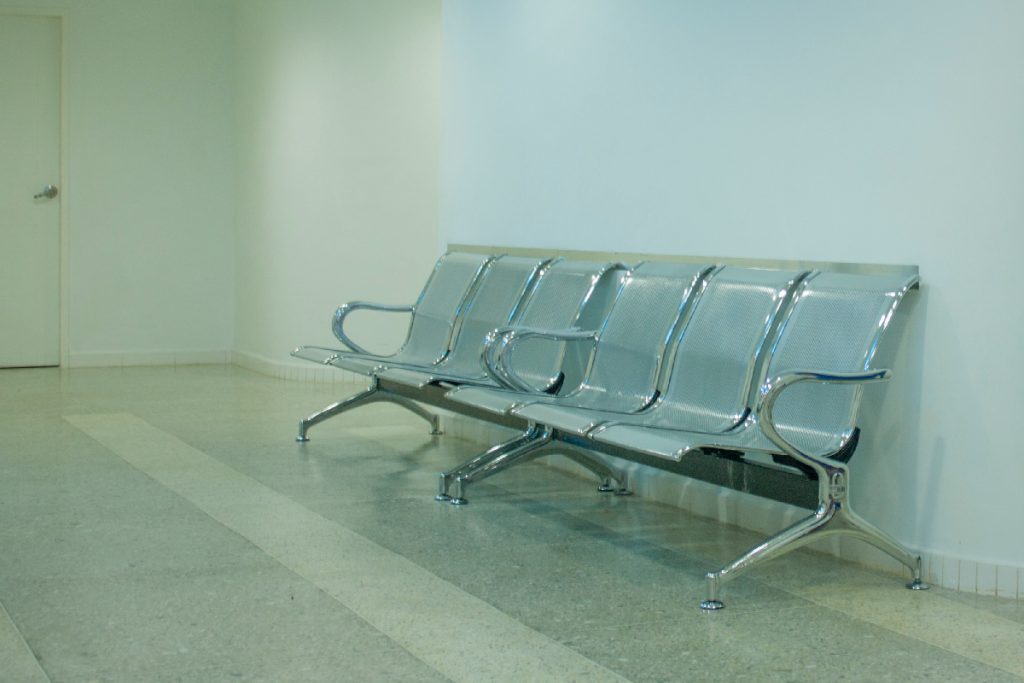Taking the Wait out of Waiting Room
Some tips to make the patient experience easier

Maryalicia Post
Published: Monday, March 2, 2020
 Most of us have a complicated relationship with time. We willingly spend it, save it, kill it, but nobody likes wasting it. And waiting for an appointment often feels like time wasted. In a perfect world, every ophthalmologist patient would arrive on time, be seen within 10 minutes and leave the clinic with thoroughly positive feelings about the experience. That’s certainly a goal worth striving for and there are lots of online suggestions to help you achieve it. This is one. And this is another.
But a late patient, an emergency, a complication can block the best-laid patient flow. What then?
If a wait is unavoidable, the best plan B is to make the delay seem shorter than it is. The waiting room facilities are key. I know because the waiting room of a practitioner I visit occasionally is a textbook case of what can be wrong. A gruff ‘take a seat’ floats up from behind the bunker that is the receptionist’s station when a new patient arrives. Behind this bunker, which takes up most of the available floor space, the receptionist is cut off from the patients, lifting her head only occasionally to call out a name. Metal chairs are strung out along the wall where patients perch like birds on a wire. There’s nothing to look at on the walls bar flu vaccine posters. Magazines are stacked high, some so old you can still join the debate on whether Prince William will ever marry Kate Middleton. A TV plays forlornly and unwatched.
What I’d like would be good Wi-Fi so I could work on my phone or iPad while I wait. I’d appreciate comfortable chairs, grouped informally. Some green plants would make the room seem warmer, along with an interesting painting or wall decoration. A few attractive ‘coffee table’ books would be diverting. There would not be a TV, though low background music would work. Crucially, the receptionist would know my name, let me know if the wait was going to take longer than 10 minutes and apologise sincerely if the wait, however unavoidably, goes into overtime.
I’m certainly not alone. There are some excellent observations on the waiting experience here and a report on a study into the subject here.
A simple formula for improvement of the waiting room is covered in this article – which has checked just about everything on my wish list and a few things more. It works off the premise that the place where the patient experience begins should be considered the ‘reception area’ not the ‘waiting room’. When the mindset shifts from the practitioner’s viewpoint of ‘waiting’ to the patient-oriented concept of ‘reception’, the way forward seems a bit clearer.
http://maryaliciatravel.com
Most of us have a complicated relationship with time. We willingly spend it, save it, kill it, but nobody likes wasting it. And waiting for an appointment often feels like time wasted. In a perfect world, every ophthalmologist patient would arrive on time, be seen within 10 minutes and leave the clinic with thoroughly positive feelings about the experience. That’s certainly a goal worth striving for and there are lots of online suggestions to help you achieve it. This is one. And this is another.
But a late patient, an emergency, a complication can block the best-laid patient flow. What then?
If a wait is unavoidable, the best plan B is to make the delay seem shorter than it is. The waiting room facilities are key. I know because the waiting room of a practitioner I visit occasionally is a textbook case of what can be wrong. A gruff ‘take a seat’ floats up from behind the bunker that is the receptionist’s station when a new patient arrives. Behind this bunker, which takes up most of the available floor space, the receptionist is cut off from the patients, lifting her head only occasionally to call out a name. Metal chairs are strung out along the wall where patients perch like birds on a wire. There’s nothing to look at on the walls bar flu vaccine posters. Magazines are stacked high, some so old you can still join the debate on whether Prince William will ever marry Kate Middleton. A TV plays forlornly and unwatched.
What I’d like would be good Wi-Fi so I could work on my phone or iPad while I wait. I’d appreciate comfortable chairs, grouped informally. Some green plants would make the room seem warmer, along with an interesting painting or wall decoration. A few attractive ‘coffee table’ books would be diverting. There would not be a TV, though low background music would work. Crucially, the receptionist would know my name, let me know if the wait was going to take longer than 10 minutes and apologise sincerely if the wait, however unavoidably, goes into overtime.
I’m certainly not alone. There are some excellent observations on the waiting experience here and a report on a study into the subject here.
A simple formula for improvement of the waiting room is covered in this article – which has checked just about everything on my wish list and a few things more. It works off the premise that the place where the patient experience begins should be considered the ‘reception area’ not the ‘waiting room’. When the mindset shifts from the practitioner’s viewpoint of ‘waiting’ to the patient-oriented concept of ‘reception’, the way forward seems a bit clearer.
http://maryaliciatravel.com